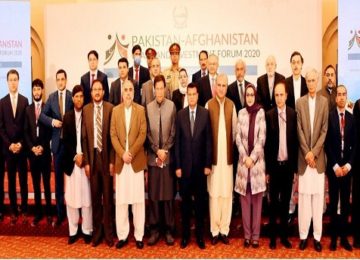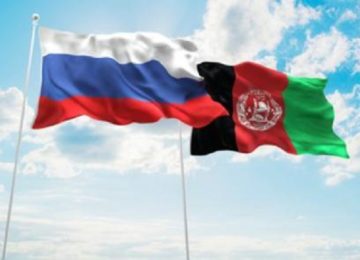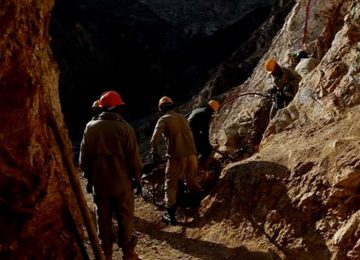China is one of the most important contemporary political-economic actors globally and more so in the South Asian region because of its ever-expanding economic initiatives and engagement in political-economic affairs in the region and beyond. However, it has been playing the role of a silent viewer vis a vis Afghan conflict throughout the course of 2000s with very limited engagement in the Afghan political dynamics at a time when the Country has been an arena for a diverse set of actors. Beijing has contained itself in terms of participating in debates focused on Afghan security, stability and long term visioning. It was only recently that China has demonstrated mobility and participation in Afghan affairs as an important actor.
Beijing has been looking at the Afghan affairs with “wait and see” approach and has gone into hibernation at most of the times in debates regarding future of Afghanistan. The fact that China is the global and regional rival of the United States has also played its part in the approach as Beijing, perhaps, has tried to remain neutral in order to avoid direct confrontation with its economic and political competitor. China has mostly stayed aside in Afghan affairs and has only joined the debates when it has had a direct impact on Chinese territory. This makes one assume that Chinese leadership has a belief that affairs within the Afghan territory are not a matter of concern for the Chinese Government unless it directly affects them.
An instable Afghanistan should be a serious cause of concern for China that shares 76 KM border with Afghanistan in Wakhan corridor located in northeastern part of it. Comparatively, a stable Afghanistan can contribute to Beijing’s regional connectivity and economic integration agenda. While one can argue that the size and extent of the Chinese economy may not need Afghanistan for its growth and expansion agenda, the perils posed by an instable Afghanistan will have far-reaching adversaries for the Asian giant.
A fractured or failed Afghanistan will pose significant security threats for China. Chinese polity and military will be exposed to internal threats posed by separatist movements in Xinjiang. At a time that China is trying to integrate its Uygur community into its broader economic and development framework, the whole investments can face a threat of insurgency backed up from Afghanistan. China has already faced threats posed by Turkistan Islamic Movement (TIM) during Taliban era as they infiltrated from sanctuaries available to them inside Afghanistan within Taliban governed geographies. Collapse of the current Kabul regime to the hard line militants could further embolden TIM and its associates challenging a major part of Belt and Road Initiative (BRI) i.e. China Pakistan Economic Corridor (CPEC) as well as economic development initiatives such as establishment of special economic zone in Kashgar.
The Republic of China Armed Forces might be of the view that TIM movements are curtailed and with their intelligence and military capacity, they will be able to silent any militant activity. However, the spillover effects of instability and conflict cannot be contained in an era where militants have adopted new tactics and have access to state of the art technology. More importantly, groups such as so-called Islamic State-Khurasan Province (IS-KP) that does not believe in operating within certain boundaries and it can have Chinese militant groups as its subseries. The group announced its presence as Afghan wing of the Islamic State of Iraq and Syria (ISIS) in July 2014 and since then it has been able to perform sophisticated attacks on its Afghan targets. Hence, a fragile or failed Afghanistan can pose prodigiously serious threats to China, at least in its western region.
Besides direct spillover affects, a weakly governed Afghanistan can also threaten countries in the Central Asian region where China has a number of mega initiatives. Beijing is looking to import energy through pipelines from Russia and other Central Asian republics through pipeline projects. One of the major disincentives of an instable Afghanistan can be a threat to these regional initiatives. Even if the Central Asian countries succeed to avoid direct effects of the Afghan conflict it will result in security cost hike of such initiatives.
Besides the security threats, the opium production of Afghanistan is another challenge threatening China. Afghanistan has been one of the leading producers of narcotics globally and is part of the Golden Crescent-Afghanistan, Pakistan and Iran-that has been a route for illegal drugs smuggling to China. With an ability to produce a large amount of narcotics, an instable Afghanistan can seriously challenge Chinese society. Amalgamation of illicit economy can result in contamination of the booming Chinese economy and criminal activities can expand to different parts of China.
On contrary to all foreseeable challenges, a stable and strong Afghanistan can be a good regional contributor to the Chinese connectivity and economic integration agenda. Based on an assessment, Afghanistan owns worth USD one trillion untapped mineral resources. These resources include a healthy amount of Lithium and Copper reserves which should be enticing for Beijing based economists as Chinese industry is in great need of the mentioned chemical elements. In addition, as Afghanistan has signed a Memorandum of Understanding (MoU) with China to join the CPEC, discussions on Asian Infrastructure Investment Bank (AIIB) funded projects and previously signed MisAynak mine contract is a clear indication of the fact that Kabul wants to collaborate with Beijing in its quest towards economic integration.
There are certainly some incentives for China in stability of Afghanistan. However, it is an instable Afghanistan that can pose serious threats to Chinese regional economic and political interest. Therefore, Xi Jinping led Chinese Government should come forward and contribute to the Afghan peace process. Beijing can play a pivotal role in garnering regional consensus on Afghan peace and reconciliation process, a pre-requisite for the process to begin. Beijing should capitalize on the leverage it enjoys with Pakistan to make Islamabad sincerely support Afghan peace and reconciliation agenda. Similarly, it should mobilize Russia and Iran to support the Afghan peace endeavors.
China can be a very acceptable option for Kabul and Taliban at the same time to offer guarantees in the case of potential breakthrough in the formal peace process. In addition, it should also further expand its military support for Afghan security forces in the wake of discussions regarding securing areas in Badakhshan to thwart challenges posed by groups such as IS-KP. Eventually China will have to increase its political engagement at local, regional and global levels in support of a strong Afghanistan in order to help the entire region survive challenges posed by the non-state actors who are exploring use of Afghanistan as their operational bases. A stable Afghanistan can have incentives for China, yet; disincentives generated by instability in Afghanistan can have far-reaching negative impact for it.
This article originally appeared on Pajhwok Afghan News on April 22, 2018. Original link.
Disclaimer: Views expressed on this blog are not necessarily endorsed or supported by the Center for Research and Security Studies, Islamabad.








